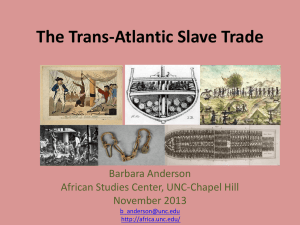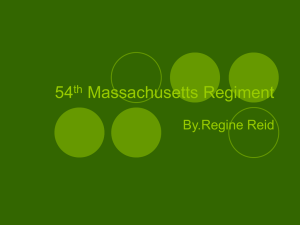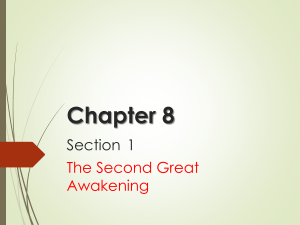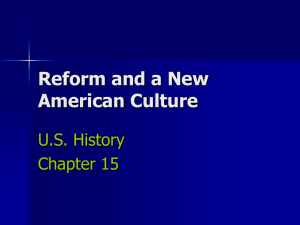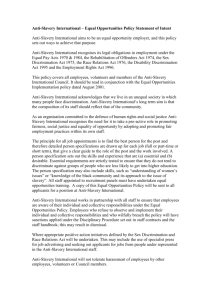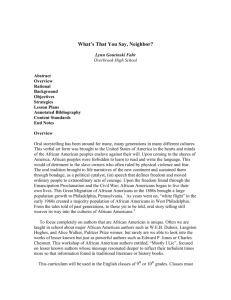File - Morell, US History
advertisement
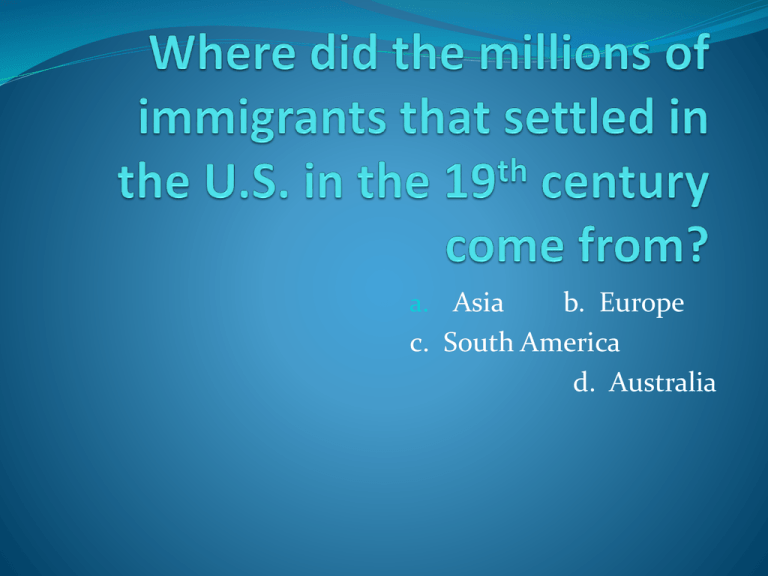
a. Asia b. Europe c. South America d. Australia Where did most of the Irish immigrants settle? a. The Northeast B. The mid-Atlantic C. The South D. The midwest What were the Americans who opposed immigration called? A. Politicians B. Citizens C. Migrants D. nativists Tenements b. Condos c. Duplexes d. townhouses a. The temperance movement, efforts at prison reform, and the abolitionist movement were all elements of A. Social reforms of the mid 1800s B. The Second Great Awakening C. Transcendentalism D. The women’s rights movement Which of the following is not an example of propaganda? A. A flyer protesting new tax laws B. An ad about a political candidate C. A radio announcement sponsored by an interest group D. A list of camping rules from a park This was the first public meeting about women’s rights held in the United States. A. World’s anti-slavery convention B. Declaration of Sentiments Union C. Seneca Falls Convention D. American Women’s Rights Convention African American students in the North A. Had less opportunity for education than those in the South B. Did not benefit from educational reforms C. Had opportunities to attend black colleges formed in the 1840s D. Usually attended the same schools as white students What led to the flood of Irish immigrants entering the United States in the mid 1840s A. Potato blight B. Unsafe working conditions C. Religious persecution D. Violent revolution Which of the following is true about women’s rights in the 1800s? A. Large cities allowed women to vote in local elections. B. Women could not serve on juries. C. Women asking for equality were punished under the law. D. Only married women could manage their own property. What effect did Nat Turner’s Rebellion of 1831 have on southern society? A. Many slaveholders freed their slaves. B. People stopped discussing slavery openly. C. Mob violence over the slave issue increased dramatically D. More whites began hiding fugitive slaves. Why were many African American schools established in Philadelphia in the mid -1800s? A. Of all northern U.S. cities, Philadelphia had the largest African American population. B. As a center of Quaker influence, Philadelphia strongly supported the education of African American children. C. Laws in other northern cities barred freed African Americans from receiving any kind of education. D. Philadelphia’s citizens believed that establishing African American schools would help the abolitionist cause. The majority of German immigrants who entered the United States in the late 1840s were attracted by A. the supply of high-paying skilled jobs. B. economic opportunity and freedom from government control. C. protection of freedom of religion D. political refuge and support for revolutionaries at home. One of the benefits of women’s reform work was that A. Some men became involved in the women’s movement B. Most people began raising money for the women’s movement C. More women began educating their children at home. D. Women began controlling their father’s property. Which of the following was common in American cities in the mid-1800s? A. Criminal activity B. Public fire departments C. Crowded subways D. Sanitation services The growth of industry and cities in the United States led to the development of a new social class called the_____. A. Working class B. Middle class C. Yeomen D. Rural poor The ________was a movement of Christian renewal that swept through the United States during the 1790s and the early 1800s. A. Great Awakening B. Second Great Awakening C. Fourth Great Awakening D. American Anti-Slavery Society a. Declaration of Sentiments b. Declaration of the Rights of Women c. Declaration of Independence d. Bill of Rights Reformer ______spoke to the state legislature of Massachusetts about the fact that the mentally ill were housed with criminals in the state’s prison system. A. Margaret Fuller B. Horace Mann C. Dorothea Dix D. Ralph Waldo Emerson The _______was an organization that fought for the immediate emancipation of slaves and for racial equality for African Americans living in the United States. A. Temperance Society B. American Anti-Slavery Society C. Know-Nothing Party D. Abolitionist Society 3. _____founded the American Anti-Slavery Society and published the newspaper The Liberator. 4. ____Started an all-female academy in Hartford, Connecticut. 5. ____leader of the common-school movement, an advocate for public education. 6. ____founded the first free school for hearing impaired people in 1817. 7.___escaped slave, who became an important African American leader . A. Horace Mann b. Catherine Beecher c. Thomas Gallaudet d. William Lloyd Garrison e. Frederick Douglass 8. ___Anti-slavery activists from a slave holding family. 9. ___women’s right activist who was one of the organizers of the Seneca Falls Convention. 10. ____escaped slave who succeeded in leading over 300 slaves to freedom on the Underground Railroad. 11. ____wanted to limit people’s consumption of alcohol. 12. ____organization designed to help fugitive slaves escape to the North. A.Harriet Tubman B. Grimke sisters C. Elizabeth Cady Stanton D. American Temperance Society E. Underground Railroad
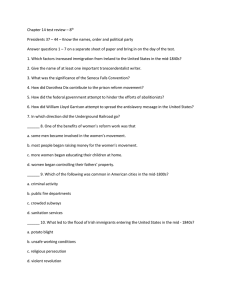
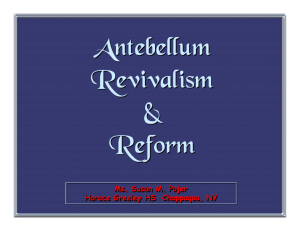

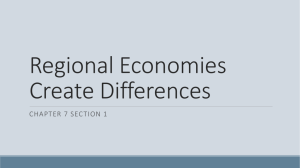
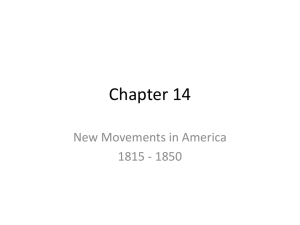

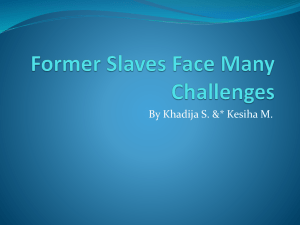

![Black People in Colonial North America (1526-1763) [Part II]](http://s2.studylib.net/store/data/005566536_1-3683a9a771d54de6c71ad7cfb222cea7-300x300.png)
